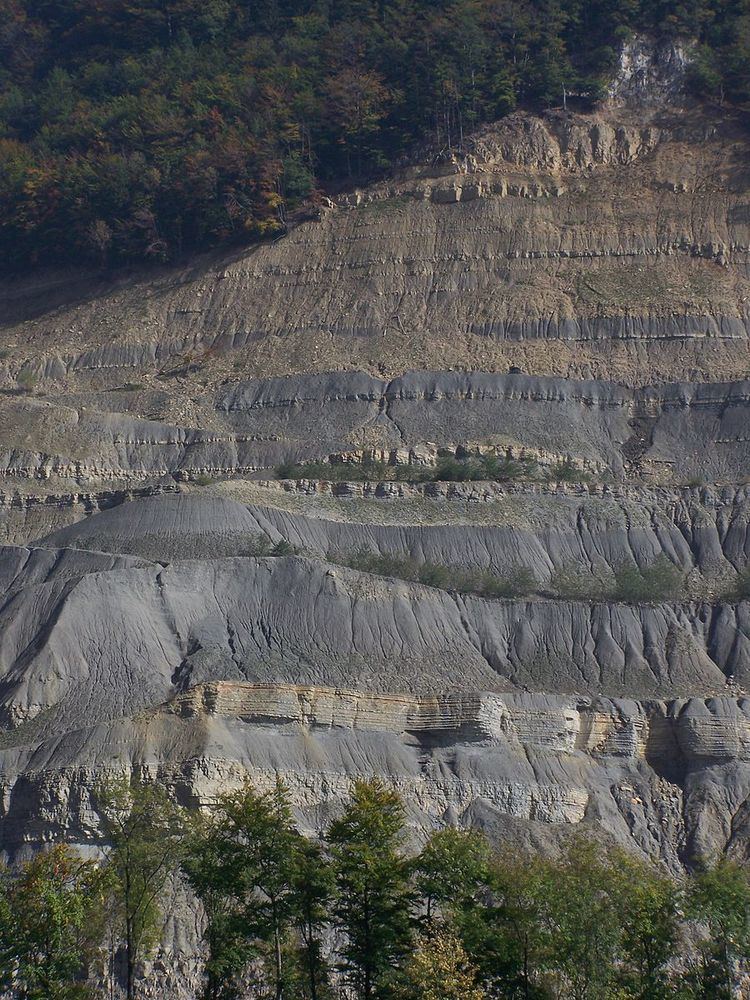 | ||
The Oxfordian is, in the ICS' geologic timescale, the earliest age of the Late Jurassic epoch, or the lowest stage of the Upper Jurassic series. It spans the time between 163.5 ± 4 Ma and 157.3 ± 4 Ma (million years ago). The Oxfordian is preceded by the Callovian and is followed by the Kimmeridgian.
Stratigraphic definitions
The Oxfordian stage was introduced into scientific writing by Alexandre Brongniart in 1827. The stage takes its name from the city of Oxford in England.
The base of the Oxfordian stage is defined as the point in the stratigraphic record where the ammonite species Brightia thuouxensis first appears. A global reference profile for the base (a GSSP) had in 2009 not yet been assigned. The top of the Oxfordian stage (the base of the Kimmeridgian) is at the first appearance of ammonite species Pictonia baylei.
In the Tethys domain, the Oxfordian contains six ammonite biozones:
